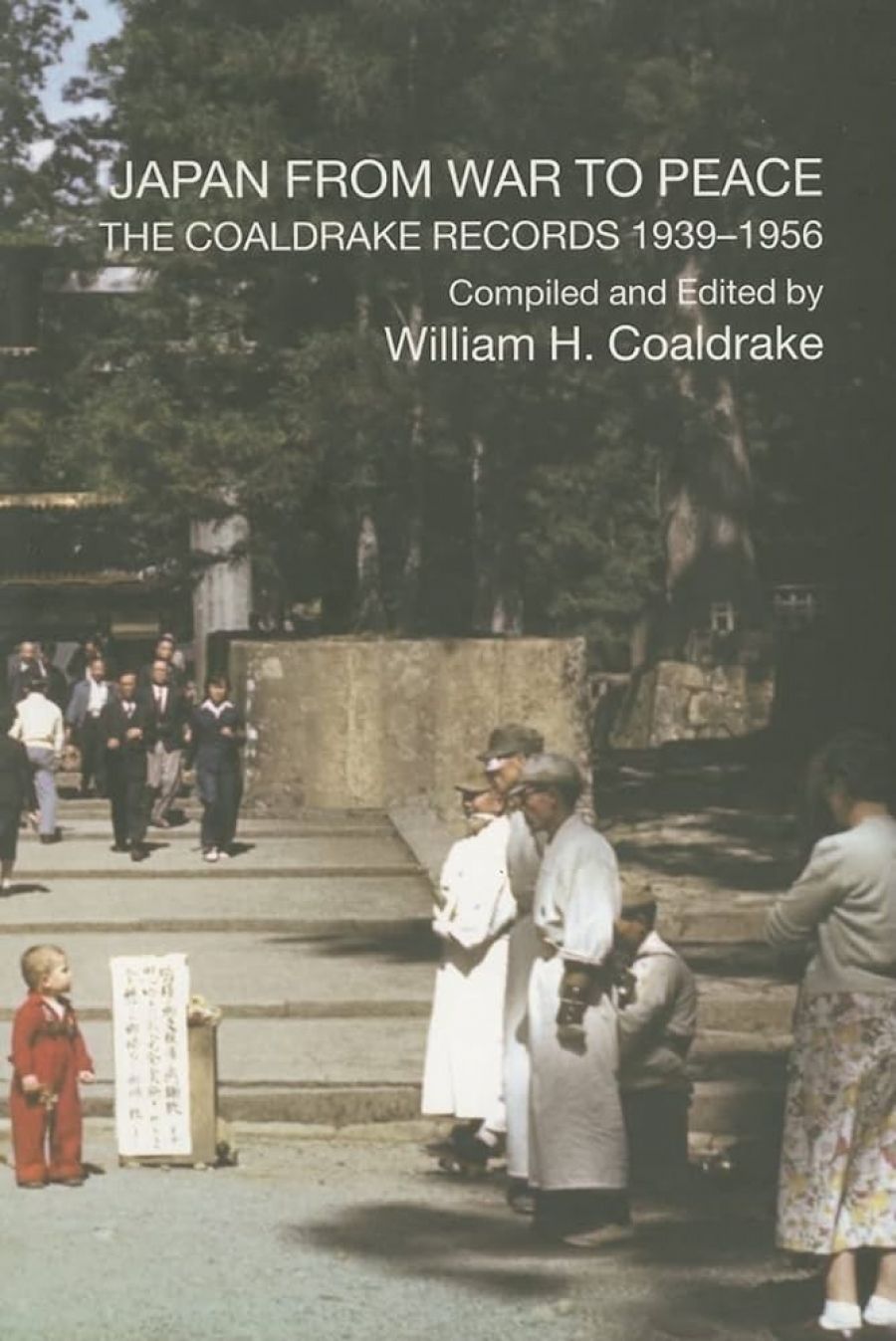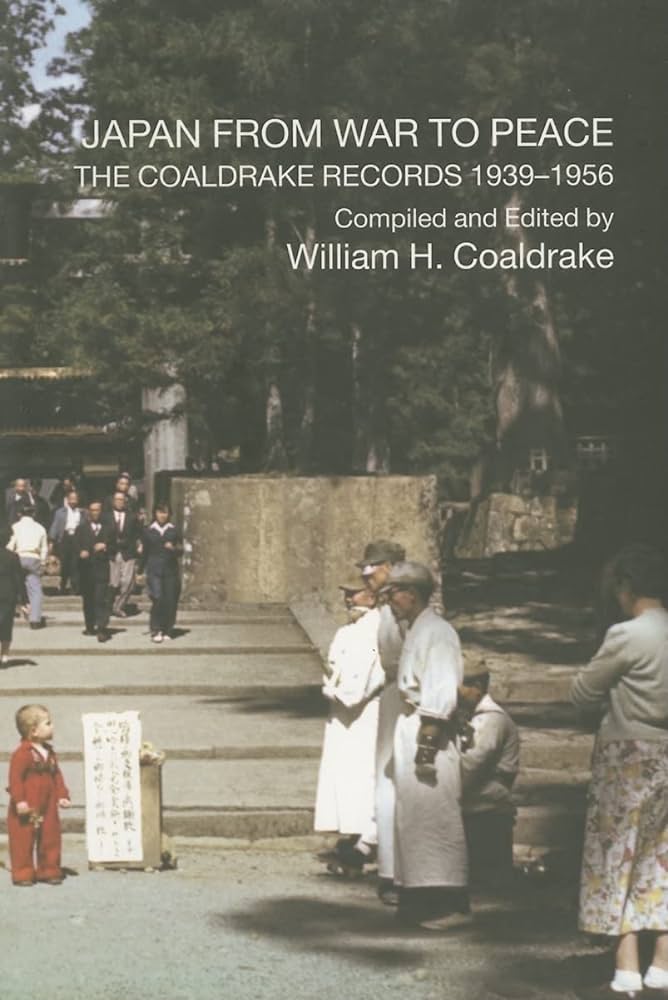
- Free Article: No
- Contents Category: War
- Custom Article Title: Coaldrake's Mission
- Review Article: Yes
- Article Title: Coaldrake's Mission
- Online Only: No
- Custom Highlight Text:
Frank Coaldrake was a significant figure in the history of the Anglican Church in Australia: a founding member of the National Union of Australian University Students; active in the Student Christian Movement; a member of the Bush Brotherhood, which ministered to indigenous Australians in outback Queensland; active in the Brotherhood of St Lawrence in Depression-era Melbourne; President of the Federal Pacifist Council of Australia; a missionary to Japan in the early post-World War II years; Chair of the Australian Board of Missions (ABM) from 1956; and elected as Archbishop of Brisbane in 1970, but tragically passing away before effectively taking up this office.
- Book 1 Title: Japan From War to Peace
- Book 1 Subtitle: The Coaldrake Records 1939-1956
- Book 1 Biblio: Routledge, $46 pb, 541 pp
- Book 1 Cover Small (400 x 600):

- Book 1 Cover (800 x 1200):

The Coaldrake Records provides insight into life in rural Japan in the immediate postwar years and the life of a missionary couple in a country that was different in many ways from the usual targets of missionary activity. Jill Dobson, who analysed articles about Japan in the pre-war journal of the Australian Board of Missions, the ABM Review, found an ambivalence due to the fact that the easy connection between the ‘civilising’ mission and Christianisation could not be easily sustained in the case of Japan, an industrialised nation with a modern legal and political system. A similar complexity is revealed in the writings of Frank and Maida Coaldrake in the 1950s, overlaid with the need to come to terms with the aftermath of World War II. Frank Coaldrake recognises Japan’s history of military aggression, but is also critical of the Allies, who firebombed most of Japan’s major cities and dropped two atomic bombs on Hiroshima and Nagasaki in 1945.
Frank Coaldrake appears to have been humanist by inclination, desiring meaningful relationships with Japanese people. This attitude is revealed in the accounts of his relationships with the individuals of the Seikôkai (the Japanese Chapter of the Anglican Church) and the residents of the rural community. The Newsletter includes skilful pen portraits of individuals, scenery and local customs.
Another pillar of his thought was his commitment to pacifism. He founded the pacifist journal The Peacemaker, and petitioned to be allowed to travel to Japan on a mission of reconciliation well before the cessation of hostilities between Japan and the Allies. Nevertheless, his pacifist mission to Japan was framed by his commitment to the Anglican Church, a highly hierarchical organisation, whose official doctrine regarded Christianity as superior to the other religions of the world. The Japanese are unselfconsciously referred to as ‘heathens’ and ‘pagans’ in the records.
Further contradictions are revealed by a consideration of the mission’s dependence on military institutions. Until 1952 the Coaldrakes benefited from the cheap postage provided by the British Commonwealth Occupation Forces (BCOF). Various other kinds of support were provided by BCOF and the Supreme Command of the Allied Powers (SCAP).
How did Frank Coaldrake connect his experiences with indigenous people in outback Queensland, the poor in inner-city Melbourne and the residents of the Izu peninsula? He hints at such links, often when recounting his solutions to some practical problem of carpentry, plumbing or heating. It would have been useful to have access to further reflections on the connections between the racialised relationships encountered in the Bush Brotherhood Days, the class dynamics in Depression-era Fitzroy and the situation of the poor farmers of Izu. In her entry on Coaldrake in the Australian Dictionary of Biography, Laurie O’Brien comments on Coaldrake’s subsequent advocacy of ‘partnership in mission’, whereby ‘indigenous Christians in “emerging” nations should be assisted to conduct missionary exchange with the “home” churches on a basis of equality’. As canon of All Souls Quetta Memorial Church on Thursday Island, he argued against assimilation as ‘harmfully racist’ and ‘persuaded the ABM to adopt “acceptance” as a guiding principle and to appoint an Aborigine as policy advisor in 1969’.
Some readers will approach this book as a memoir of Frank and Maida Coaldrake, some as travelogue, some as ethnography. Specialist readers may be stimulated to imagine other research projects going beyond the documents presented here, and place the ABM-supported mission to Japan in the larger cultural history of white Australia’s relations with indigenous Australians and with neighbouring countries in Asia.


Comments powered by CComment